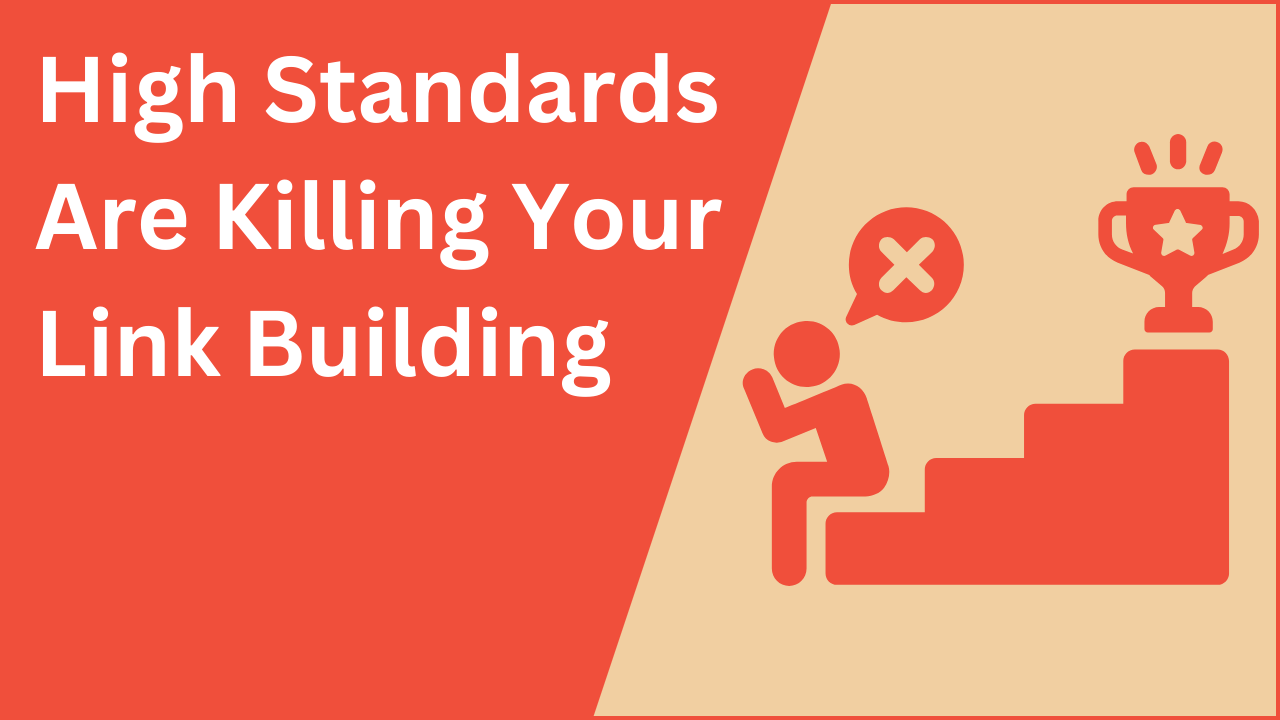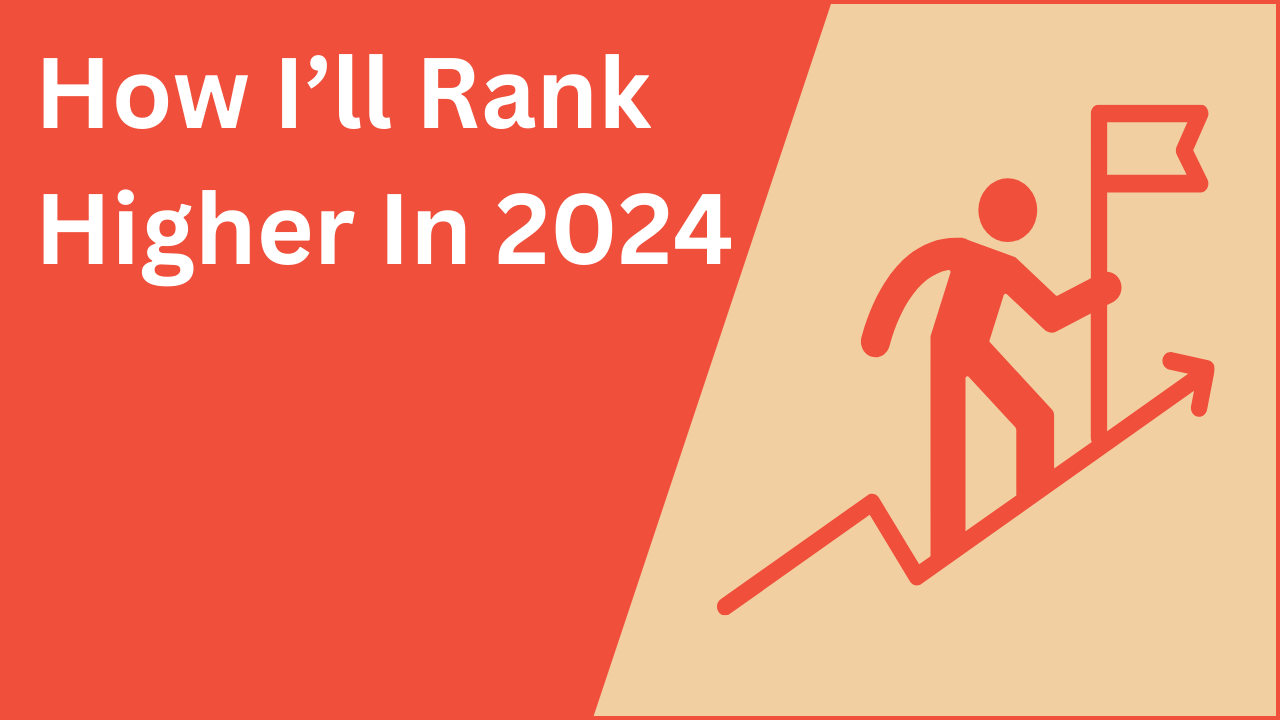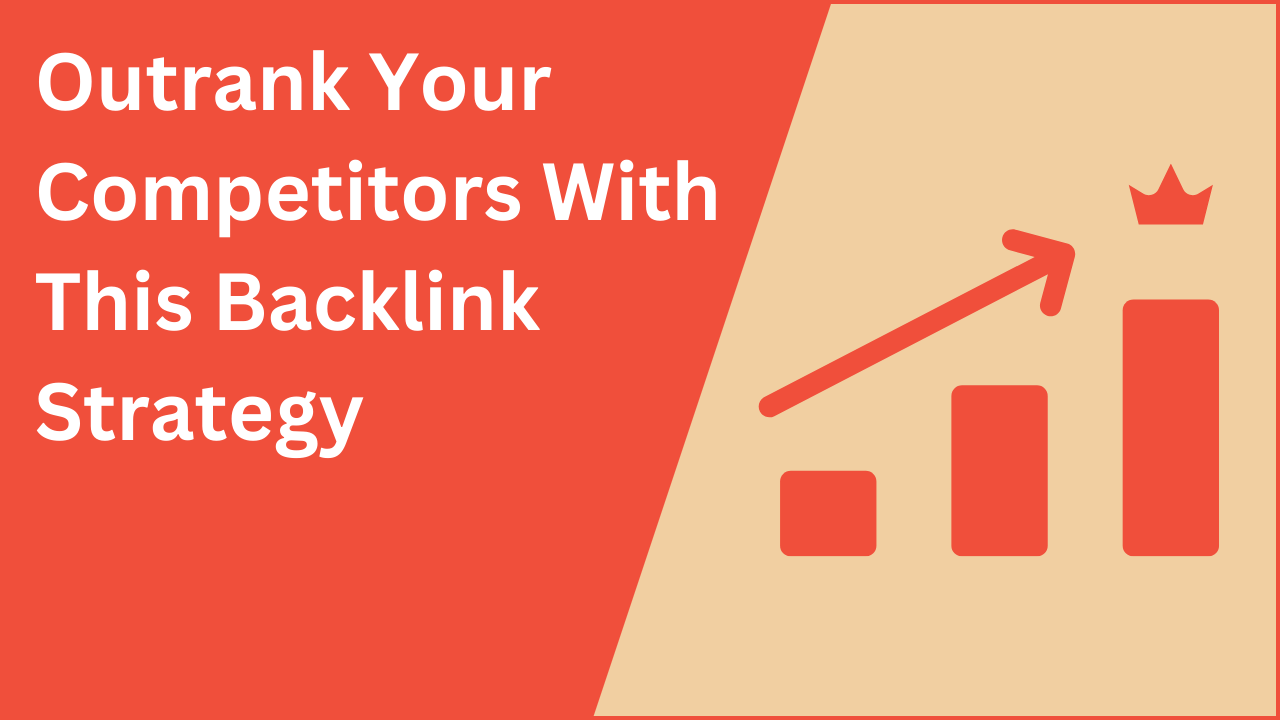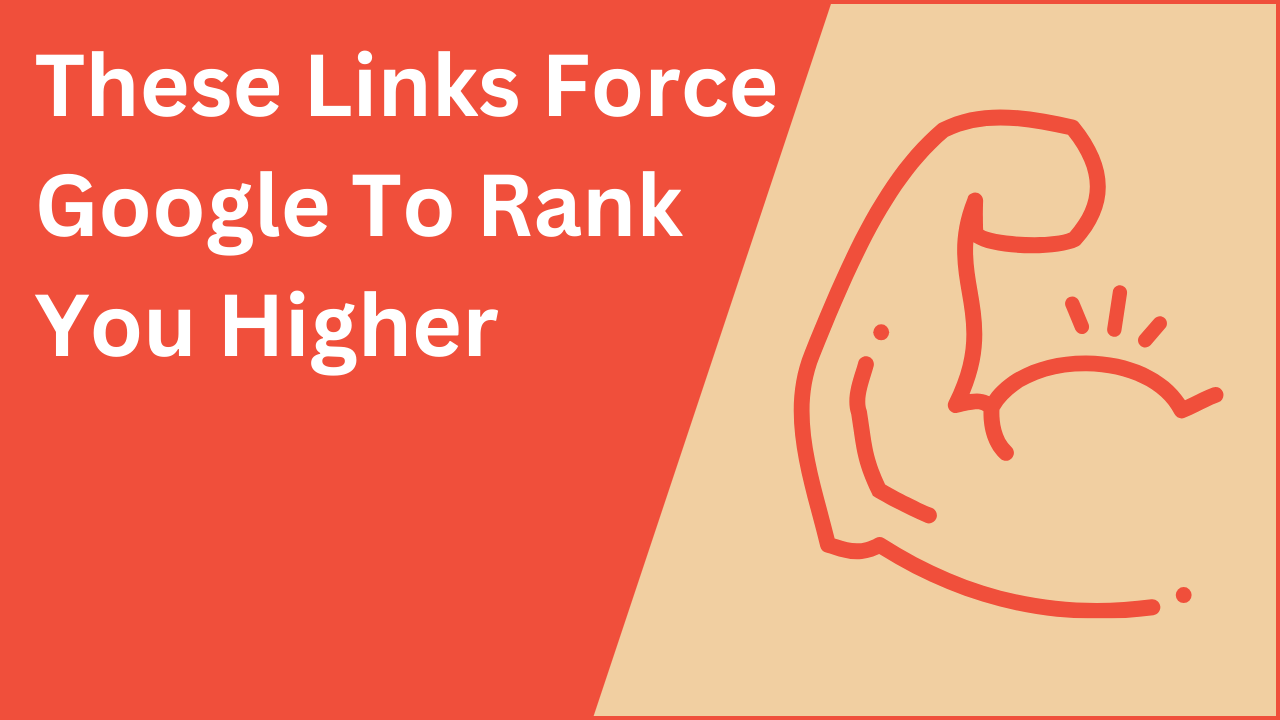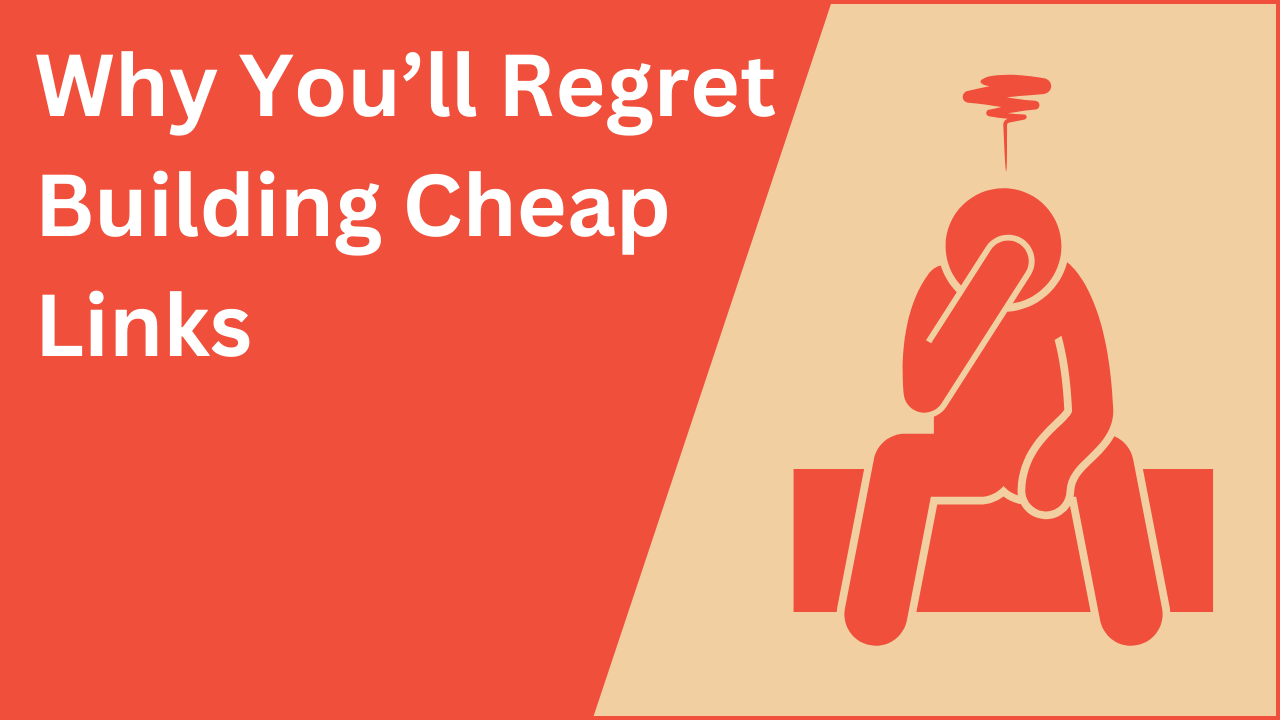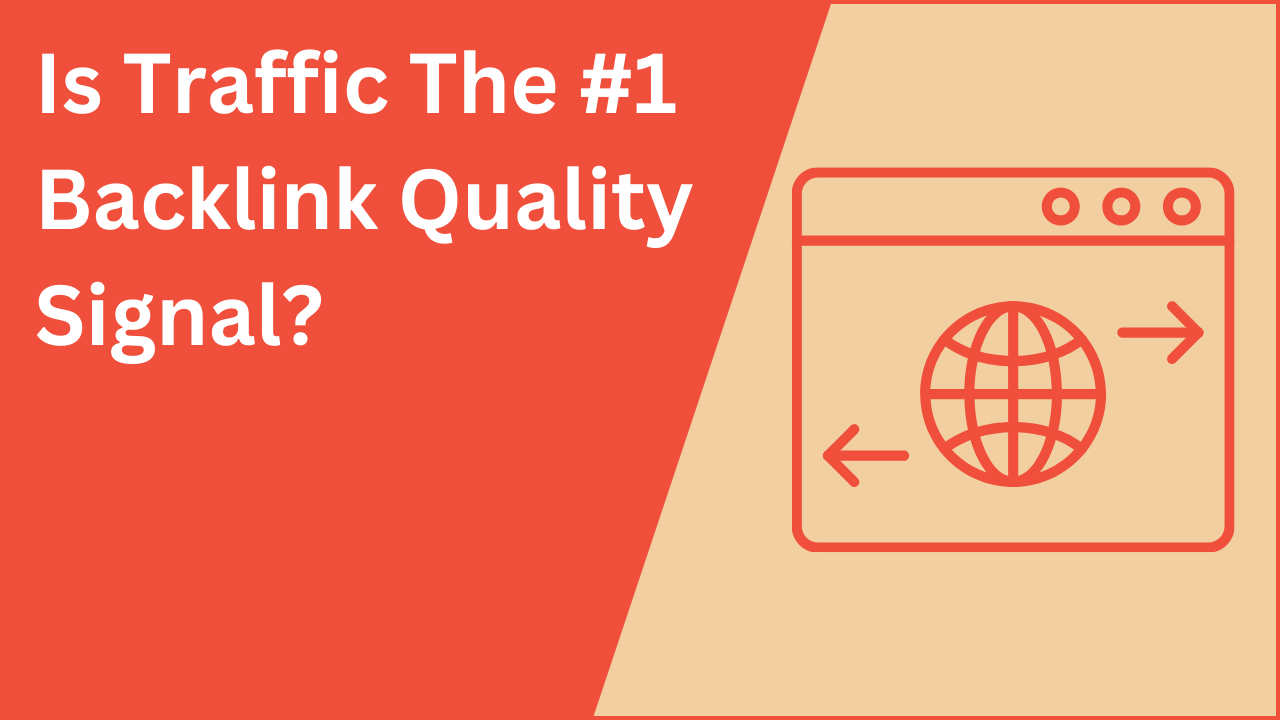Link building is always changing and the strategies and methods we deploy never really “guarantee” anything.
One thing that’s guaranteed is that thinking outside the box and developing unique link building strategies can help you piggyback over the competition.
Tiered link building can be one of these strategies if you can learn how to do it properly and as white hat as possible.
In this guide, we’re going to discuss what tiered link building is, how to do it, and some pitfalls to avoid along the way.
What is Tiered Link Building?
Tiered link building is an SEO strategy designed to compound link building efforts. It involves building high quality links to a webpage and then building complimentary links that further enhance that primary link.
The first link you build to the website is called a first tier link. The second series of links you build to that same webpage are called second tier links. From there, there’s third tier links and so on.
The whole point of a tiered link building strategy is to build a structured series of backlinks that point to backlinks that point to your target site.
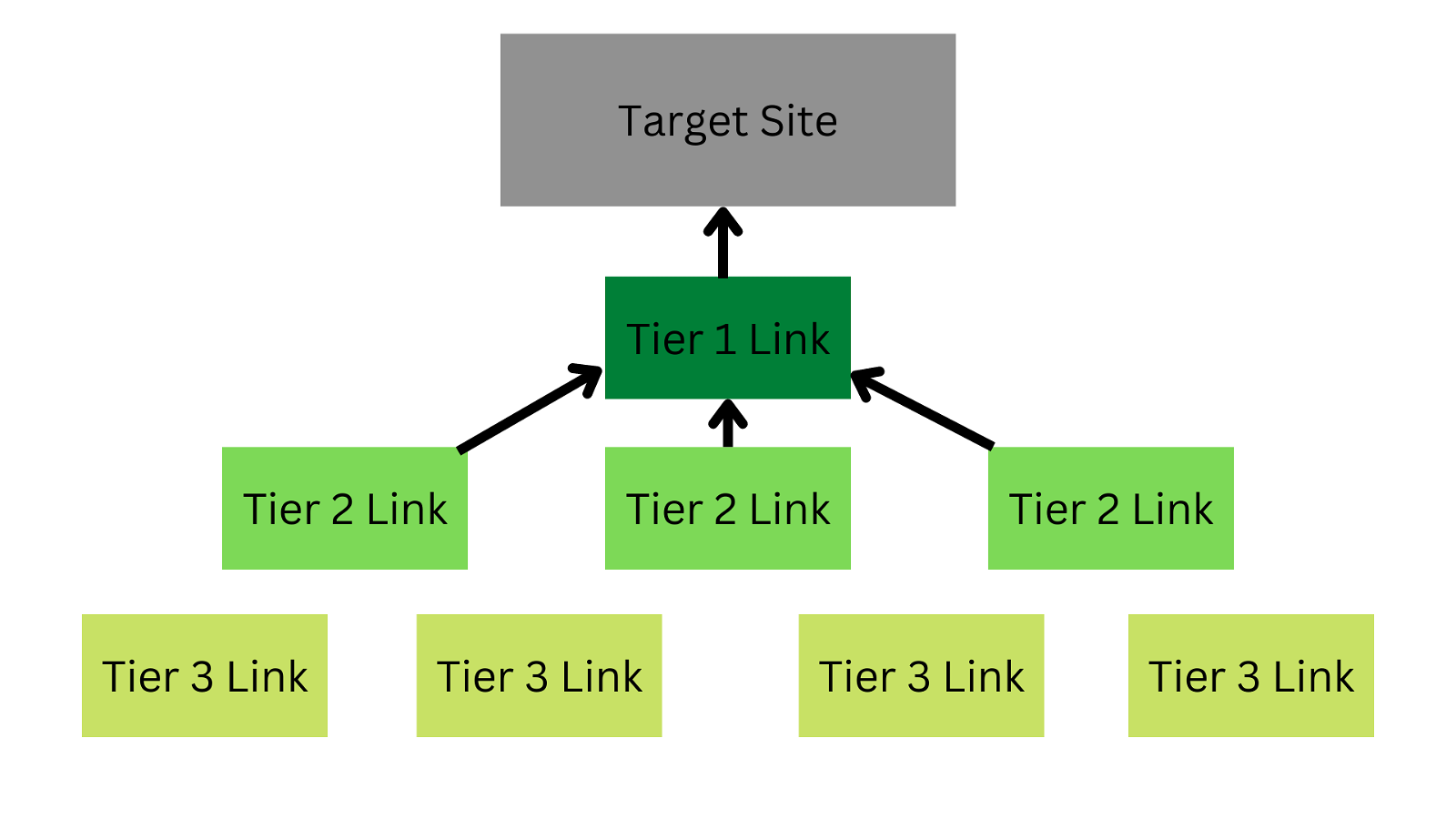
The image above provides a brief representation of how this works and the colors are used to indicate the power of each link. The dark green first tier link points directly to your website. This should be a powerful, high DR link (in the best case scenario).
If it is, you’ll want to build links to that link to further increase its power and impact on your website. By sending second tier links to your first tier links, you’re increasing the amount of link equity of link juice that link is passing onto you.
Does that make sense? Let’s break it down a bit more.
What Are Tier 1 Links?
First tier links sit at the top of the pyramid and are considered the most important because these point directly to your website. You want to make sure these links are the highest authority links possible because if they’re not, it’s not even worth building second tier links to them.
These links should be from high DR websites in the 50+ range depending on the DR of your website. Links from sites like these have great backlink profiles of their own and you can assume that a link from that site will have a strong impact on your performance on its own.
Once you have your first tier links established, then you want to build second tier links to the first tier links to further increase the amount of power they have.
What Are Tier 2 Links?
The next step in the pyramid is a tier two link. These links point to the first tier link and are an essential piece of the tiered link building strategy.
Google likes to see that other high DR links are pointing to the first tier because it increases the power of that link thus passing more link juice onto your website.
Now, there’s a lot of ethically questionable information out there. Many link building agencies and SEO websites will tell you that this is the perfect time to build low quality links from forums, PBNs, and article directories.
We disagree.
Doing this is risky for your website which is why many people are fine with building these links and pointing them to a second tier site. All this does is pass the risk onto other people’s websites and it doesn’t do much to boost the first tier either.
Instead, we believe in building high quality tiered links no matter what.
Low quality links will only benefit you short-term and if you’re building great second and third tier links they’re only going to have a more powerful impact on that first tier and pass more link juice onto your website by trickling down from there.
Are Tier 3 Links Worth It?
Third tier links take this process a step further. Many experts recommend building lower quality backlinks in blog comments, profile links, and social media. A lot of people use automated link building tools to generate links at scale for this.
We don’t necessarily see the need because the amount of time and effort you’re going to have to put into building these links isn’t worth it. With that time and money, why not focus on building more first tier links and better tiered links pointing to the first tier?
Third tier backlinks are almost always low quality and if they have any benefit at all, you’re simply passing the risk onto your second tier links which can only trickle down and hurt you in the long run.
We recommend avoiding third tier links and using your resources to conduct white hat tiered link building whenever possible.
Understanding the Benefits of Tiered Link Building
All of this might seem confusing and difficult to grasp. The goal of this SEO strategy is to increase the value of each link as you build more links pointing to it.
By understanding the benefits of this method, maybe you will find it easier to implement to increase your search engine rankings and boost your link profile. Here are the benefits of tiered link building:
It Increases the Value of the Primary Link
We’ve talked quite a bit about this but let’s break it down in a different way by comparing tiered link building to a traditional link building strategy.
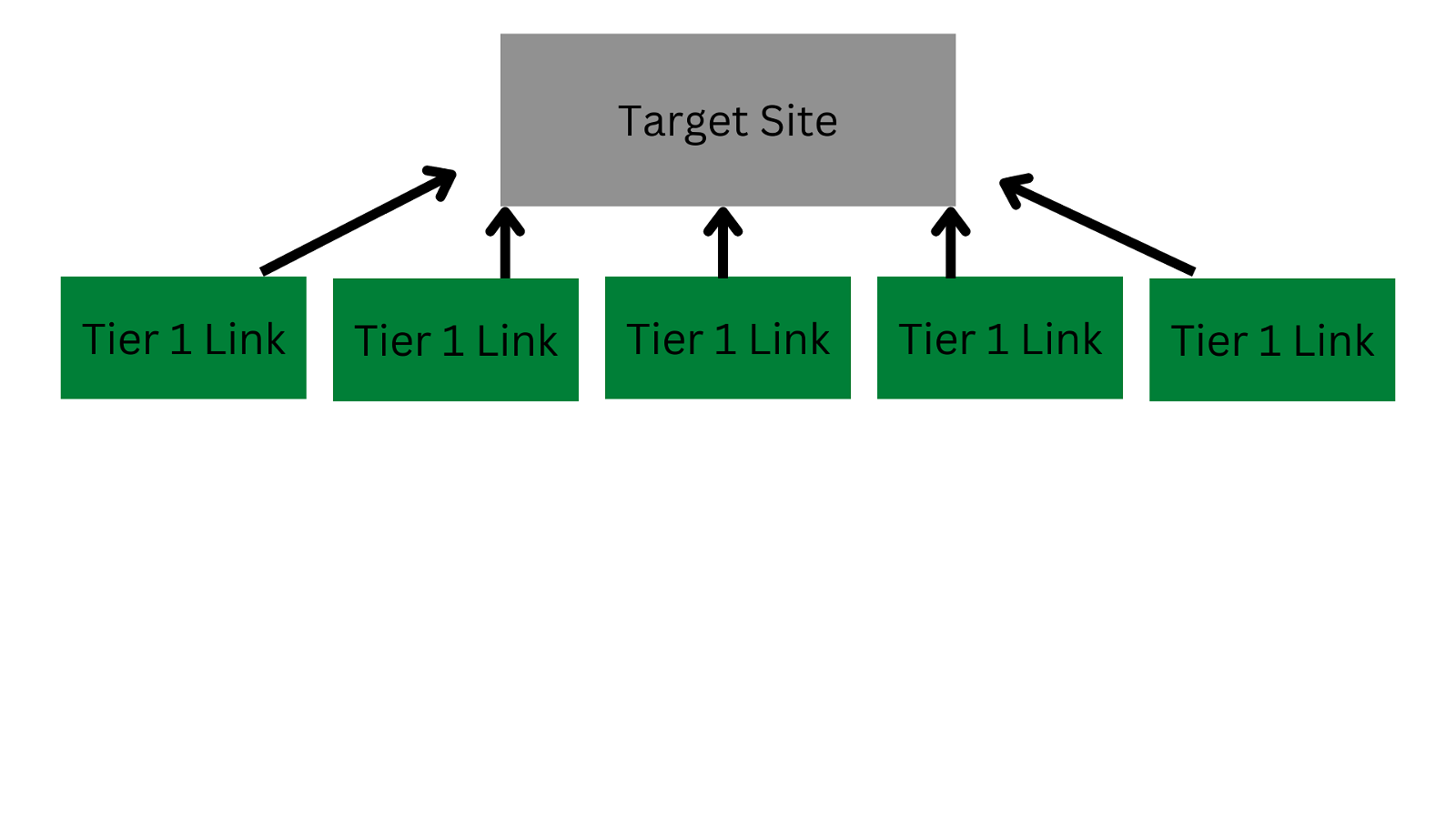
Your average link building strategies work something like this. You build a bunch of links to your website and try to make sure that the links are high DR and meet certain qualifications to determine if they’re a good link or not.
This strategy creates a single channel of links that are passing value onto you. But, what if these websites don’t have a ton of links pointing to them? Or, what if they’re not actively building links to the page that is linking to you?
Tiered link building allows you to create a multi-level link building strategy to generate high quality backlinks and further boost the power of the links you’re building.
This is a great way to build link equity and take control over the amount of authority being passed onto you.
Establishes a Healthy Backlink Profile
An effective tiered link building campaign helps you establish a robust link profile without raising any red flags to Google about your methods. By using a more complex strategy, it can be more difficult for Google to see through what you’re doing which minimizes risk.
Instead of just having link after link going from one site to your site, now you have a web-like structure of backlinks pointing to different sites that are pointing to other sites that are pointing to you.
This is also extremely helpful in the case of guest posts. One mistake people make with guest posts is that they write each guest post using their name and pointing the link directly to their website which also has their name on it.
SEO strategies using these methods immediately lose their luster when Google figures out that you’re building links to your website. Remember, it’s against Google’s policies to do any sort of link building whatsoever. Even if you’re providing value in the form of a guest post, it’s still against the rules.
If you’re writing guest posts on a bunch of second tier sites that point to a first tier site, it can be more challenging for Google to figure out what you’re doing.
It Minimizes Risk (when done correctly)
A lot of these benefits go hand-in-hand but it’s important to cover each of them. The main caveat here is “done correctly.” Just because you’re building second or third tier backlinks doesn’t mean it’s time to decrease the quality and use slimy link building tactics.
You need to make sure you’re building high quality backlinks no matter what. This is one of the tiered link building strategies we deploy at WeOutreach. We believe that increasing rankings in the search engines requires ethical strategies from step 1.
If you’re creating backlinks from reputable sites and providing value in exchange for editorial links, you’ll never have to worry about risk.
The Risks of Tiered Link Building
Many people would consider tiered link building to be gray hat SEO and that can be true if you’re not following certain ethical rules like we’ve discussed in this guide.
That said, as long as you’re always trying to build the highest quality links you shouldn’t have too much to worry about. Here are two risks that you might run into even if you’re not using black hat methods.
Can Take A Lot of Time
According to Moz it can take up to 10 weeks for a single link to have any impact on your search engine rankings.
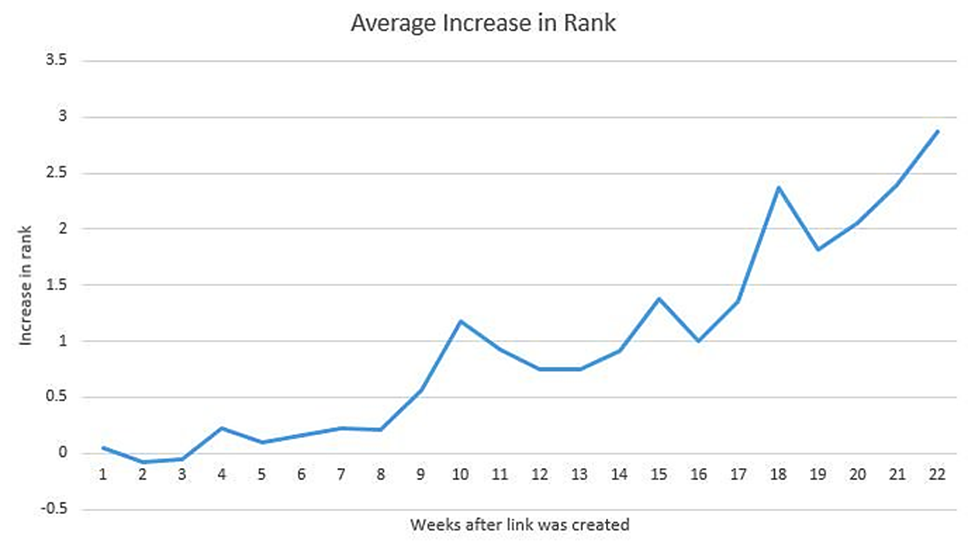
So, building tiered links is certainly not a rank fast strategy but no link building really is. This is another reason why it’s so important to avoid low quality backlinks and only use tiered backlinks if you can put the time and money into building good ones.
The link equity you’re going to generate with tiered link building isn’t going to benefit you much in the short-term so why not focus on doing things properly so you can reap the rewards down the road when your backlinks start getting picked up?
Incredibly Resource-Intensive
In addition to taking a long time, tiered link building can soak up quite a bit of your resources. This is because you need to build high DR links as your first tier so it’s worth building tier two links to the first tier links.
If your tier one link is only a DR 20, you wouldn’t want to bother building high DR links to that because it’s not going to make as much of an impact. You might as well just build the higher DR link to your site and then work on getting tier two links to the high DR site.
Tiered link building is also expensive.
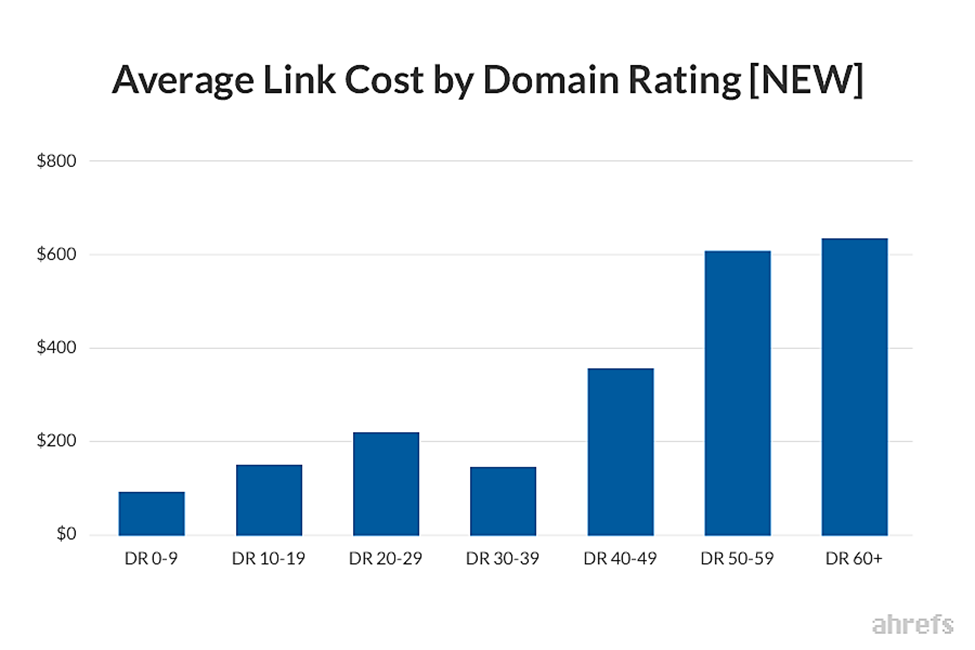
You can see the cost of building a high DR link. If you wanted your tier one link to be a DR 60+, it will cost you over $600. From there, if you want to build a bunch of DR 25 links, it can cost around $200 each. Either way, it’s important that you build quality dofollow links to the web page to help boost your backlink profile.
A Few Tips to Maximize Tiered Link Building Efforts
We’ve talked quite a bit about what “not” to do with tiered link building. Let’s provide some tips that we use in our agency to help improve your backlink profile and build more links that are going to increase your search engine rankings.
Create Links on High Authority Sites
As you get down into second tier backlinks and below, people start to think that it’s okay to build low quality links. Don’t do it!
Make sure that you only use legitimate backlinks from great websites with valuable information and a strong backlink profile of its own. If you’re not doing this, you’re only shooting yourself in the foot.
Diversify Your Link Outreach
Tiered backlinks are great for spreading your link profile around and getting links from websites you normally wouldn’t. For example, if you run a gardening website, you want to make sure that all your links are relevant to that topic. So, that narrows you down quite a bit.
But, when you’re looking for a second tier link, you could branch out a bit more and get a business-related link or something else for example.
This could also be a good opportunity to get links from different types of websites. If most of the tier one links you get are from large news sites, perhaps a few ecommerce links would help diversify your profile a bit.
Only Place Contextual Links
A backlink can only appear natural if it’s placed contextually within a piece of content. This means that the link needs to fit into the text, it needs to make sense, and the content it’s pointing to needs to align with the content that is linking to it.
As you start to trickle down the pyramid you might think it’s okay to relax and not pay attention to the little details. Everything you do now is going to determine your results later. Make sure the connection between all the links is relevant because this will result in better long-term benefits.
Final Thoughts
Tiered link building is an advanced strategy that can be powerful once you understand how it works. It’s not as complicated as it might seem but it’s critically important that you don’t take any shortcuts and that your second tier backlinks are just as good as your first.
Implementing everything you’ve learned in this guide will help you build a stronger backlink profile and increase your rankings in the SERPs!

